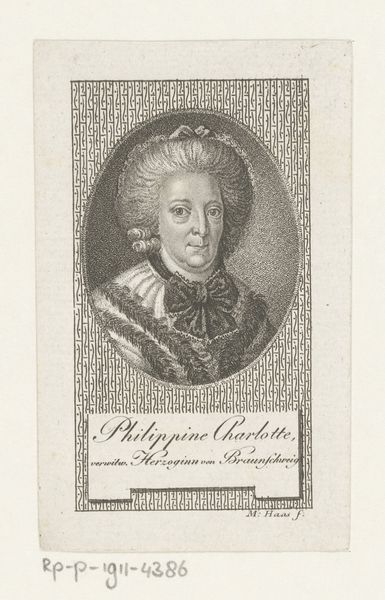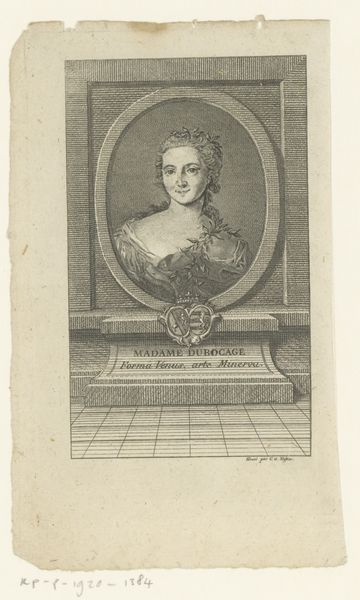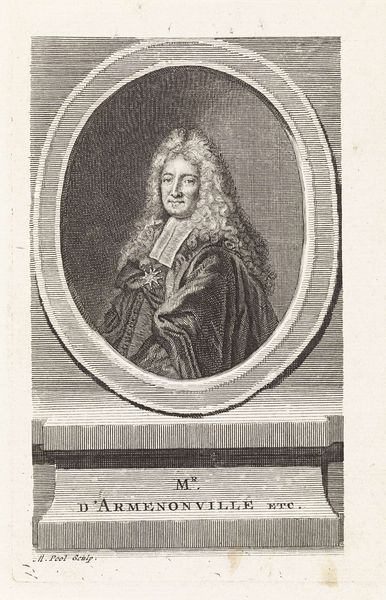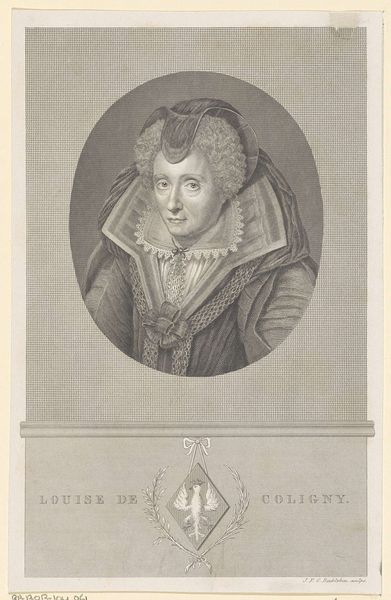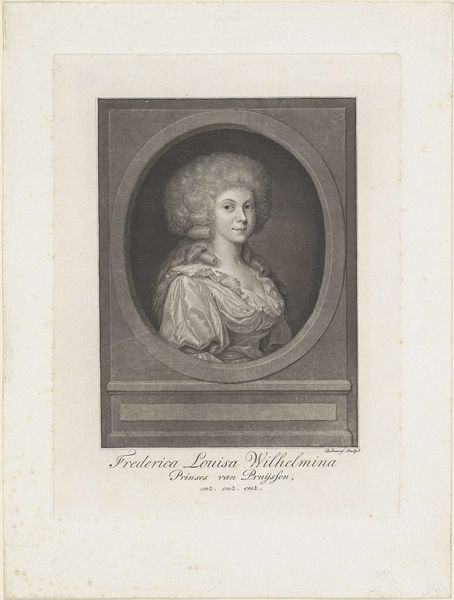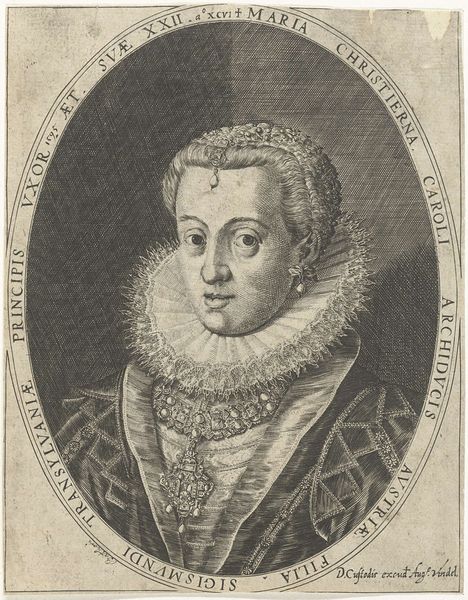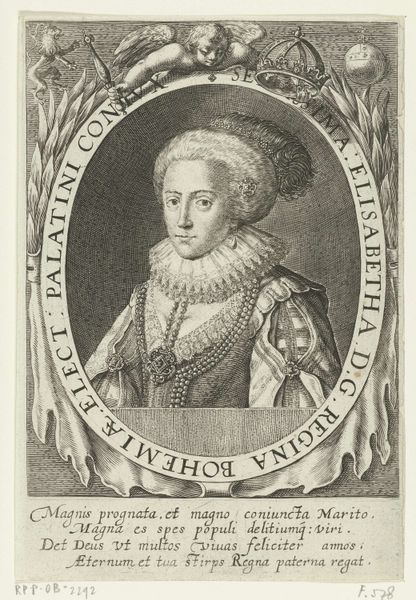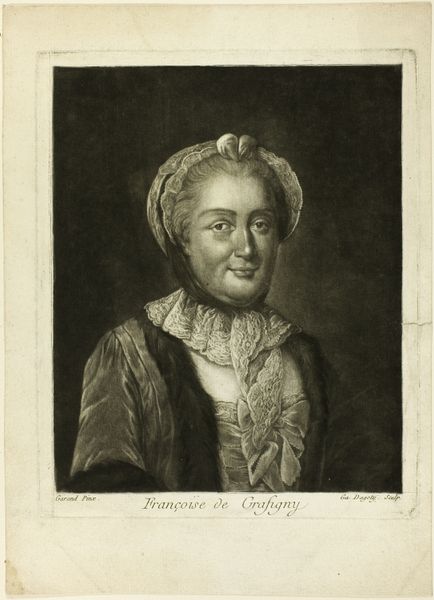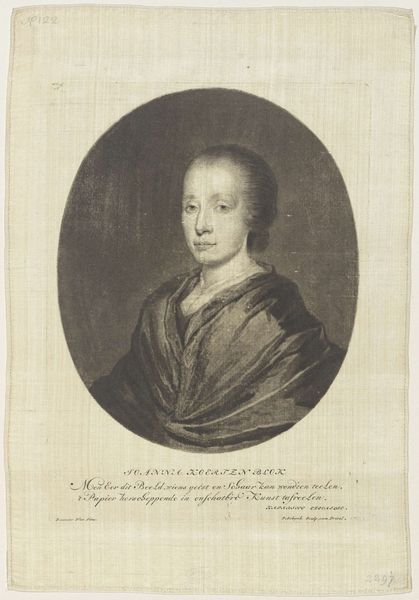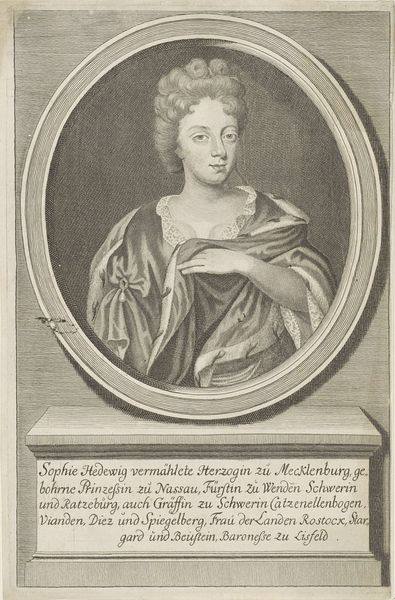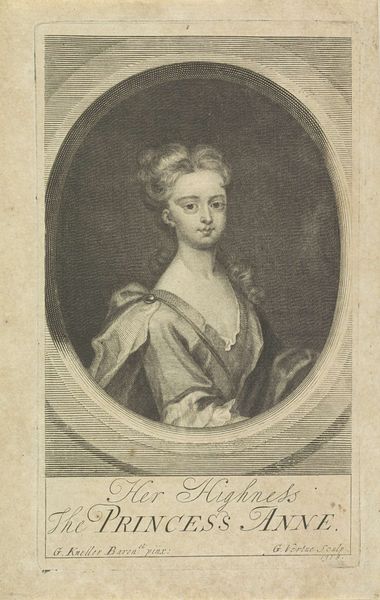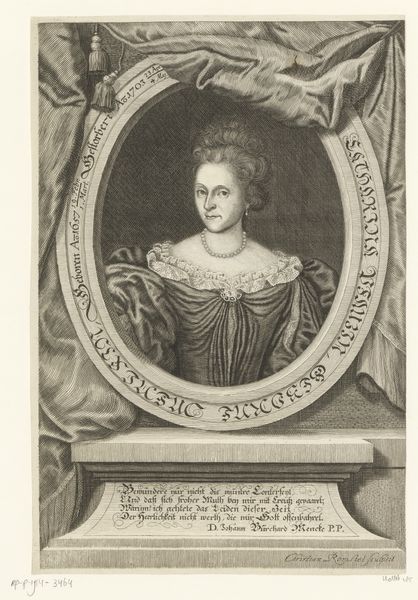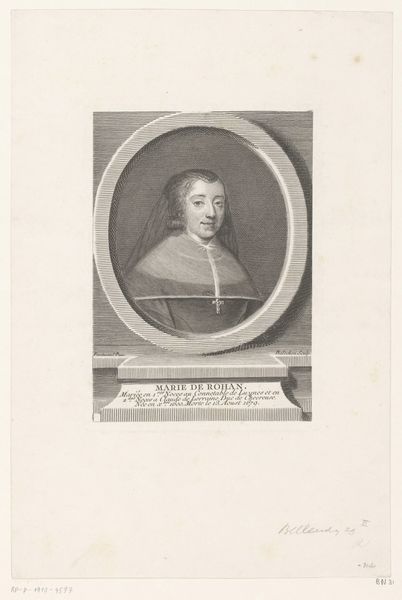
print, engraving
#
portrait
#
neoclacissism
# print
#
history-painting
#
engraving
Dimensions: height 89 mm, width 49 mm
Copyright: Rijks Museum: Open Domain
Curator: Let's discuss this intriguing print: "Portret van Friederike Sophie Wilhelmine". Meno Haas created it sometime between 1762 and 1820, using the technique of engraving. Editor: My first thought? Quiet elegance. There's a restrained stillness in her expression, but the textures, the hair especially, just pop against that patterned backdrop. It feels very controlled and composed, wouldn’t you say? Curator: Absolutely. Engraving, as a printmaking technique, demands precision. Note how the image benefits from a precise execution to establish visual interest in surface details. It gives depth to the fur stole and volume to Wilhelmine’s elaborate coiffure. Consider the division of labor inherent in printmaking at that time as well: from artist, to engraver, to the distributor and vendor. Each one a player in the larger social ecosystem. Editor: The formal composition whispers “Neoclassicism”, which favored symmetry and reason. Yet, there's also a soft humanity in her gaze that the artist clearly wanted to capture. The question I ask is was she aware she was taking part in constructing an illusion? Was this constructed for circulation and consumption or as an act of remembering? Curator: Perhaps a bit of both? Prints like these were indeed consumed by a rising middle class, eager to emulate aristocratic tastes. But remember the era—history painting and portraiture served as powerful propaganda. It’s no small coincidence that as mechanical reproduction methods increased there was also increased colonial domination of new areas for extraction. The expansion of European capitalism and portraiture walked hand in hand. Editor: It’s as if she is a figure caught between eras, doesn't it? I am sensing echoes of the baroque in the fur trim and voluminous hair, fighting against this desire for this crisp new Neoclassicism. It makes me wonder about her personality, or at least, the persona she presented to the world. Was she confident? Perhaps even a little mischievous? Curator: This engraved portrait served a social and cultural purpose, not merely reflecting Wilhelmine's likeness but also contributing to the production of aristocratic social status via reproducible imagery. Editor: Looking at it now I have a new admiration for the way artists used line and texture. This isn't just a representation of someone. There's the hand of the artisan in the rendering and crafting of this portrait that echoes something fundamental about human existence. Curator: I would also observe, that this artwork, viewed through the lens of social and material production, offers insights into 18th-century cultural and economic systems that other art forms can sometimes obscure.
Comments
No comments
Be the first to comment and join the conversation on the ultimate creative platform.
